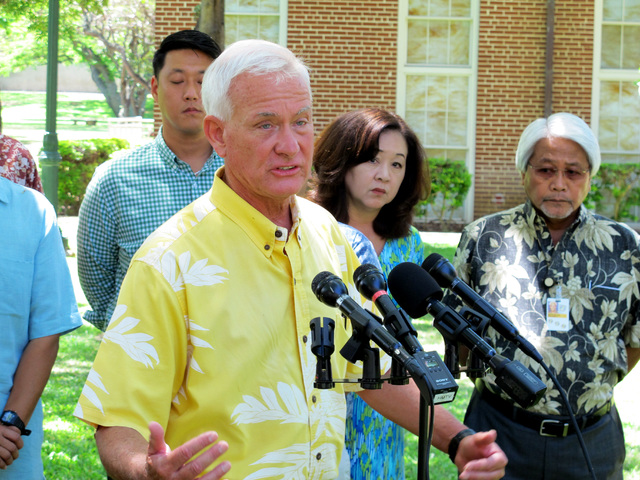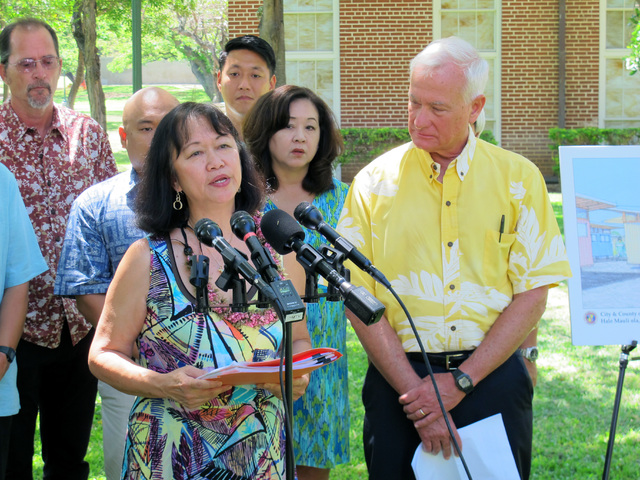HONOLULU — Honolulu Mayor Kirk Caldwell announced details of a plan to create emergency housing out of modified shipping containers on Sand Island, an industrial part of Honolulu near a wastewater treatment plant, public parks and beaches. ADVERTISING HONOLULU —
HONOLULU — Honolulu Mayor Kirk Caldwell announced details of a plan to create emergency housing out of modified shipping containers on Sand Island, an industrial part of Honolulu near a wastewater treatment plant, public parks and beaches.
The site is intended to help people transition out of homelessness and is expected to house 75 to 100 residents.
Caldwell on Thursday announced that the Institute for Human Services, which operates a major homeless shelter on Oahu, would manage the facility and coordinate case management and supportive services to help residents find permanent housing. The housing designer will be announced later, he said.
“It’s just the beginning,” Caldwell said Thursday. “Addressing our homeless challenges is about one step at a time, slice by slice, making it better for individuals and families. We continue on this march toward being in a better place.”
The site, Hale Mauliola, is meant to be a safe place of hopeful transition, providing access to health care and job services, said Connie Mitchell, executive director of the Institute for Human Services.
“We hope it will be a step toward normal routines outside the public eye so that people can enjoy privacy that they don’t have now,” Mitchell said.
The lockable modular housing units will be for individuals and couples, and pets will be allowed, as long as they don’t pose a danger to other residents. Children won’t be allowed to live in the camp initially while the city tests out the program, Caldwell said.
The housing program is intended to be in place for one year. “We’re going to see how it goes,” Caldwell said. “We are going to probably tweak it, improve it, and then do more of the same around our community because we have huge challenges to get more people into shelter.”
The city is looking at a parcel to develop a similar housing development on the Waianae Coast, and also is looking for solutions in Waikiki, downtown, Chinatown and Kalihi, he said.
“The way we help people who don’t have homes isn’t by moving them to somewhere else,” Caldwell said. “It’s housing them in the community that they’re living in today.”
Critics had been worried about potential toxins in the Sand Island location which is near a former dump. But Caldwell says the State Department of Health tested the soil and found it to be safe. Part of Sand Island was previously used as an internment camp during World War II.
There were 4,903 homeless people on Oahu, and 1,939 were unsheltered, according to state’s latest count.




